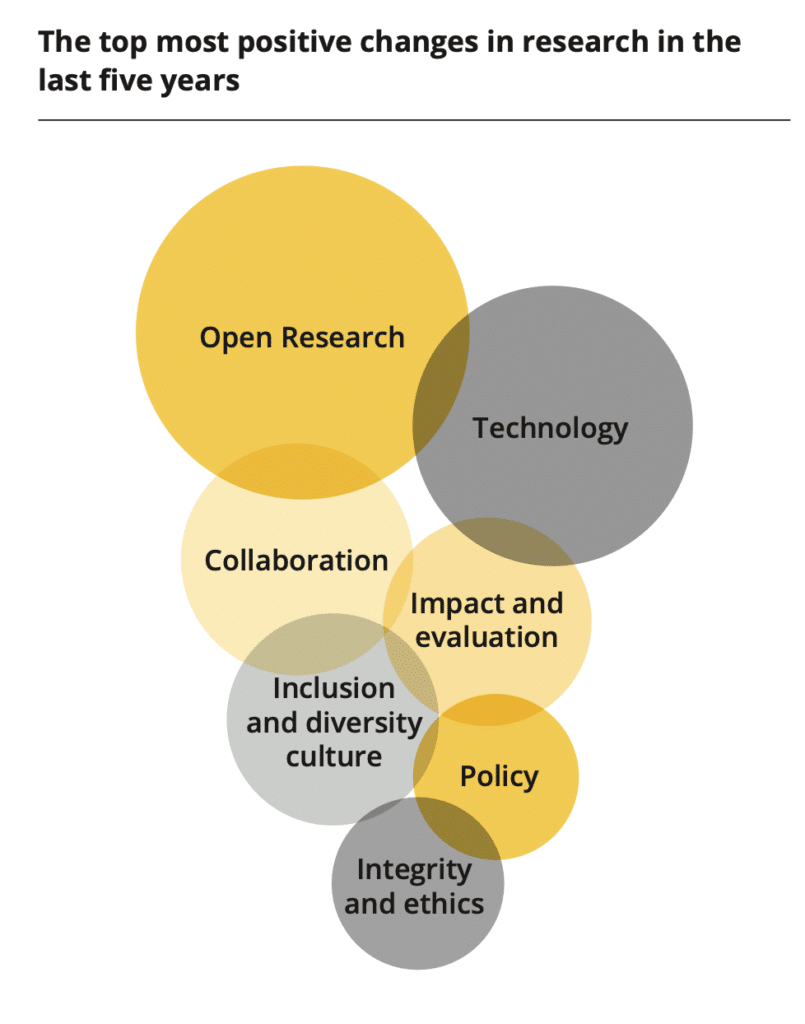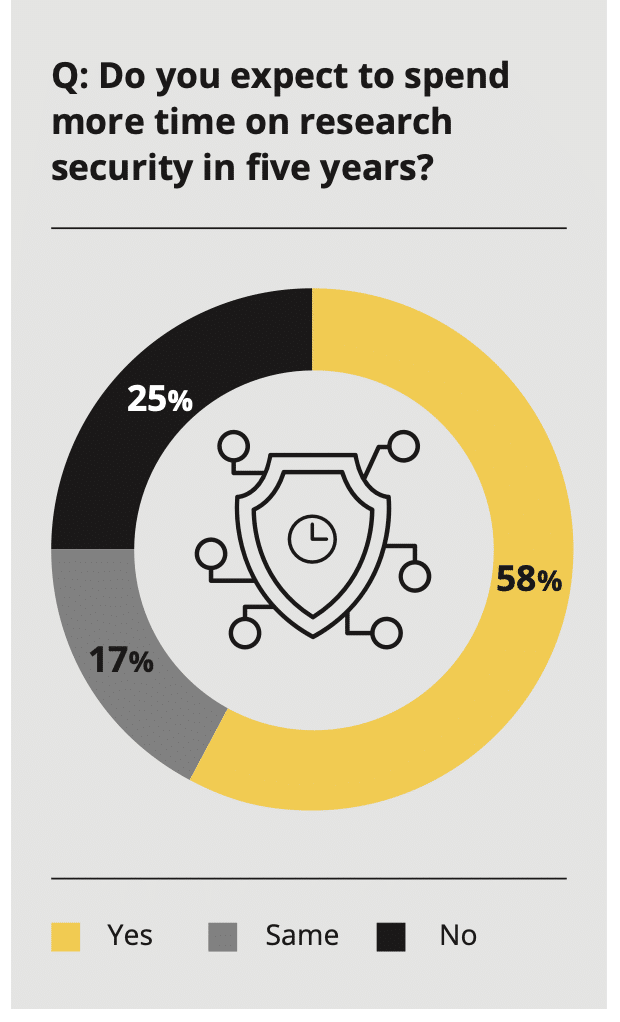How are emerging trends in open research shaping the future of academia, and what challenges do they present? As international collaborations grow, what benefits do they offer, and what risks might they introduce? This article delves into these critical questions, examining their impact on the global research landscape – as highlighted by Dimensions data and Digital Science’s Research Transformation: Change in the era of open, AI and impact (authors include Rachael Delevante, VP Marketing at Digital Science and Mark Hahnel and Simon Porter from the Digital Science thought leadership team)
The report focuses on how open research, collaborations, Artificial Intelligence (AI), and impact measurement are reshaping the research world. Drawing from survey responses of 380 participants across 70 countries and in-depth interviews with 15 research leaders, the report provides insights into major shifts in research culture, highlighting both rapid advances and challenges. “Change and uncertainty have become our global norm…external pressures from an increasingly complex world are forcing rapid change in the sector,” explains Porter. It also demonstrates how Dimensions data is utilized to analyze research trends, assess impact, and support institutional decision-making. Dimensions data offers valuable insights into publication patterns, funding distribution, open access (OA) growth, and research security.

This blog article will focus on two key aspects highlighted in the report: trends in open research revealed by Dimensions data, along with associated challenges, and the growing trend of international collaborations, including their potential benefits and risks.
What does Dimensions data reveal about Open Access?
Dimensions analytics reveals a significant increase in OA publishing and a growing push toward research transparency over the past two decades. OA publishing is expanding beyond traditional “OA publishers” to include established publishers like Wiley and Springer Nature. The data indicates that mandates by research funding bodies, such as Plan S in Europe and US federal policies, are driving OA adoption, with OA research articles increasing from 712,933 (32.2%) in 2008 to 3,519,951 (63.3%) in 2023.
“OA does appear to be the future, however, there are bumps in the road…Hindawi had shown promise in OA growth and as such was acquired by Wiley in 2021. However, its success was short-lived, and Wiley retired the brand in 2023 following revelations that Hindawi had been compromised by paper mills,” says Porter. The shift toward open research presents challenges, including data security concerns that can affect international research collaborations, such as publication fraud and paper mills. This is where Dimensions solutions like Dimensions Research Security, which helps institutions identify potential risks, verify disclosures, and review research networks, become crucial.
Benefits and challenges arising from international collaborations

Dimensions data also reveals a growing number of international collaborations, with research partnerships increasing steadily since the 1960s. The report highlights that “24% of all papers resulted from international collaboration in 2020, representing a 10% rise on 2001 outputs,” and that COVID-19 further accelerated collaboration, leading to a “17% increase in publications” from 2019 to 2021. Interdisciplinary research leads to higher citations and greater societal impact. As noted in the report, “There is no doubt that articles that do have that international collaboration have higher citations, higher reach for all sorts of reasons you would expect.” Academic institutions and funding agencies can use tools like Dimensions and Altmetric to track research performance, move away from siloed working methods, and allocate funding to impactful areas.
However, international collaborations may introduce research security threats, including the possibility of intellectual property theft and geopolitical risks. Research security, as defined by the NSPM-33 Implementation Guidance, involves protecting the research enterprise against threats to national or economic security, violations of integrity, and foreign government interference. It encompasses safeguarding scientific research inputs, processes, and outcomes. With rapid technological advancement and globalization, institutions face challenges such as global competition, emerging industries, and societal shifts toward digitization. “Institutions [are] tasked to balance risk and innovation, but they aren’t equipped,” says Porter. Research security is a shared responsibility among governments, funding agencies, universities, and intergovernmental organizations.
Dimensions Research Security is designed to help institutions protect their research and researchers. Developed with research security experts, it uses a data-driven approach to assess risks, streamline compliance, and foster trust. Leveraging the Dimensions database, it offers a fast way to identify risks and ensure compliance with government and funder mandates.
Download the report to read more: Research Transformation: Change in the Era of AI, Open and Impact.
